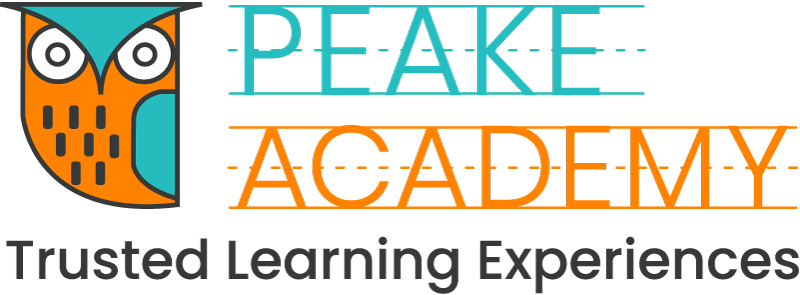Harmonizing Commitments: Prepping for a Smooth Transition to Summer
As the gentle breezes of spring gradually warm into the vibrant days of summer, families find themselves at a seasonal crossroads. The transition from spring to summer brings with it a change in pace and a shift in routines, especially for those with children.
The end of the school year signifies not just a break from the classroom but also an opportunity to engage in new experiences and forms of learning. However, navigating this transition smoothly requires thoughtful preparation and flexibility. This post aims to guide parents on seamlessly shifting from spring routines to summer activities, ensuring continuity in their children's learning and family routines.
Embrace the Change, Plan Ahead
The first step in a smooth transition is accepting the impending change and planning for it. Begin by reviewing your family's spring schedule and identifying commitments that will end and those that will continue through the summer. Early planning allows for a more gradual adjustment to new routines rather than an abrupt shift, which can be jarring for children and adults alike.
Set Goals for the Summer
Discuss as a family what everyone hopes to achieve over the summer. Goals can range from academic achievements, such as reading a certain number of books, to personal development goals, like learning to swim. Setting goals helps maintain a focus on growth and learning, even outside the traditional school setting.
Create a Flexible Summer Schedule
Develop a summer schedule that balances structured activities with free time. This balance is crucial for children, who benefit from the freedom to explore and play, as well as from continued engagement in structured, goal-oriented activities. Incorporate time slots for reading, educational projects, sports, and family activities. Remember, flexibility is key—the schedule should serve as a guide rather than a strict regimen.
Prioritize Continued Learning
The summer slide, a term used to describe the learning loss over the summer break, can be mitigated with proactive planning. Incorporate educational activities that align with your children’s interests to keep the learning process enjoyable and engaging.
Educational Outings
Take advantage of the warmer weather to explore educational sites such as museums, historical landmarks, and nature parks. These outings can provide hands-on learning experiences that are both fun and informative.
Summer Reading Programs
Many libraries offer summer reading programs that incentivize children to keep reading throughout the break. Participating in these programs can help maintain literacy skills and foster a love for reading.
Online Courses and Workshops
Explore online courses or workshops in areas of your child’s interest. From coding to art, summer can be a great time to delve into subjects that there might not be time for during the school year.
Foster Independence and Responsibility
Summer offers a unique opportunity to teach children about responsibility and independence. Assign age-appropriate chores or tasks that contribute to the family or their personal goals. Encouraging independence helps children develop a sense of responsibility and self-confidence.
Engage in Physical Activities
Physical activity is crucial for children's health and well-being. Summer’s longer days provide ample opportunity for outdoor play, sports, and family outings that involve physical exercise. Whether it's joining a local sports team, going for family bike rides, or simply playing outside with friends, encouraging active play is essential.
Nurture Social Skills and Relationships
With the absence of daily interaction with peers at school, it’s important to encourage socialization during the summer months. Arrange playdates, participate in community events, or consider summer camps that align with your child's interests. These activities support the development of social skills and the maintenance of friendships.
Maintain Consistent Routines
While flexibility is a hallmark of summer, maintaining some consistency in daily routines can provide a sense of security and structure. Keep regular meal times, bedtimes, and other routines as consistent as possible to help ease the transition from the more structured school year.
Communicate and Adjust as Needed
Regular check-ins with your children about how they're feeling and what they're enjoying (or not enjoying) can help you make necessary adjustments to your summer plans. Open communication ensures that the summer remains enjoyable and fulfilling for everyone.
Transitioning from spring to summer doesn’t have to be a daunting task. With thoughtful preparation, clear communication, and flexibility, parents can ensure a smooth shift to summer routines that promote learning, development, and fun. By setting clear goals, maintaining a balance of structured and free time, and prioritizing continued learning and physical activity, families can make the most of the summer months.
Free Resource
Thank you for reading this content. And if you loved this post, please be sure to join our Parent Advisor Facebook group where we share more insights and community.
Navigate the shift from spring to summer with ease for your preschooler with our insightful guide and grab your FREE Kindergarten Prep Goals Checklist to track and celebrate their developmental milestones.
Everyone deserves self-care
The same goes for busy moms like you. So let's do it together and create a healthy habit!
Join the 30-Day Happy Mom Challenge Today!
Visit our Parent Advisor and The Buzz Blogs to learn more about related topics and parenting tips. You are welcome to join our private Parent Advisor Facebook group. It’s a growing community of parents and preschool teachers where you can learn and share more parenting tips.














